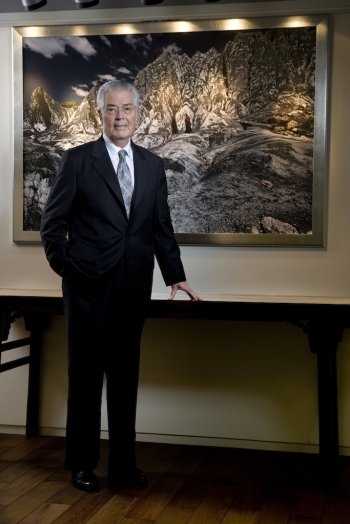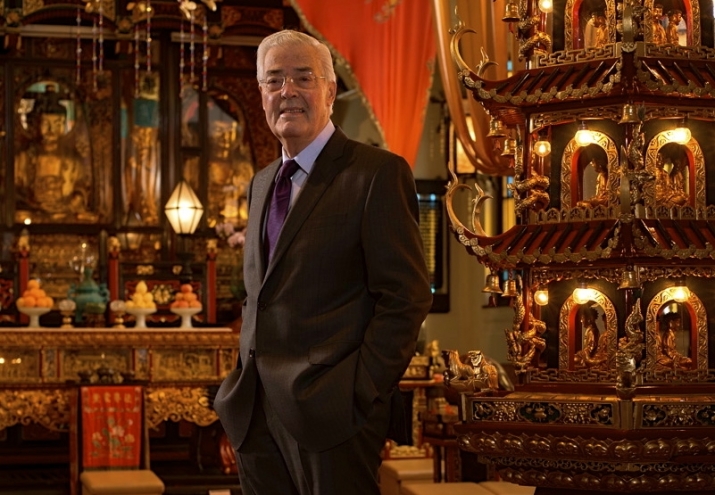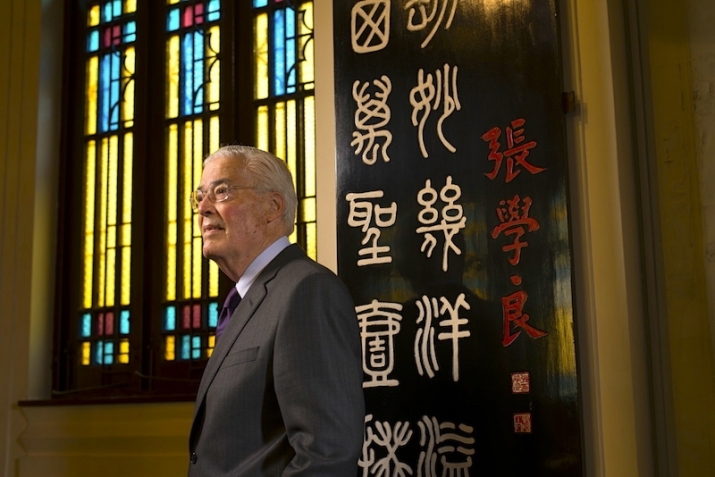In 1995, a respected philanthropist inaugurated a Buddhist temple in Vancouver to share its spiritual service with the local community. But soon after the establishment of Tung Lin Kok Yuen Canada Society, its founder decided that only so many devotees could benefit from the location and space of a physical temple. For Buddhist philosophy to be understood by as many as possible, Mr. Robert Hung Ngai Ho (何鴻毅居士) knew that Buddhists needed to get online for a worldwide platform. Thus Buddhistdoor.com was born, which its first editor, Alan Kwan, and his team would bring to life as one of the first and largest Buddhist websites in the world.
A website might seem commonsense in the 21st century, where smartphones browse the web as fast as computers and household broadband is as expected as running water and electricity. But it is easy to forget that the Internet was only commercialized in the West during that very year of 1995, when Mr. Ho founded Buddhistdoor. Even then, dial-up connections were notoriously slow and public access was uncommon. Seen in context, it seems very fair to say that Mr. Ho’s idea was a visionary one; a remarkable prediction of Buddhism’s participation in a future of hyper-fast, global information sharing.
Based on this extraordinary, practical foresight and the many university programs he has sponsored in the service of Buddhism*, I believe that several things inspire Mr. Ho’s philanthropy. There is that deep appreciation of culture and goodness, his family’s tradition of giving, and his sense of civic care. But most important are his lifelong Buddhist values. He is animated by a Buddhist vision of independent inner growth, simplicity, and love of learning and philosophy. In other words, Mr. Ho’s beliefs are about what it means to be non-attached, at ease, and compassionate in samsara’s imperfect world (which, for all its faults and tragedies, is only one life away from Amitabha Buddha’s Pure Land).
At the end of last November, I spoke with Mr. Ho about his unique spiritual journey, which he credits with deep fondness to his late teacher, Master Wu Yi (悟一法師). It all began in colonial Hong Kong, with Venerable Wu Yi’s simple, straightforward presentation of profound Buddhist truths. Other monastics of Mr. Ho’s childhood were of a lofty bookishness and had a passion for rites and ritual, making pious Buddhist practice seem distant and difficult for youths. Mr. Ho’s journeys and conversations with Venerable Wu Yi were critical in shaping his vision of how Buddhism needed to be shared with the world.
Like Venerable Wu Yi, the founder of Buddhistdoor and The Robert H. N. Ho Family Foundation maintains that the key to fostering better understanding is accessibility and ease of communication. This was most apparent in the tarnished image of Buddhism in Hong Kong during the colonial era. Christian missionaries tried their worst to misrepresent Buddhism, and Mr. Ho still remembers the old smear: “don’t bump into those strange monks on Race Day [near the Jockey Club’s racecourse in Happy Valley], or your bet will be unlucky.” The caricature of Chinese Buddhism as outdated superstition stuck for many decades, even as Buddhism ironically began winning interest in the West. The Cultural Revolution also carved a serious split in the understanding of Buddhism between older generations and younger Chinese.
Happily, Mr. Ho reflects, things are different now: the Buddha’s birthday is now a holiday in Hong Kong, unthinkable in bygone British days, and Buddhism has rallied thanks to its encouraging growth in Europe and the Americas. Part of his life’s work has been to continue healing the rift of misunderstanding between old and young, orthodox and modern. It has also been to encourage young people leaving other religions and ideologies to try meeting the Buddha, to be surprised by the encounter with him, and to get acquainted with Buddhism’s freethinking spirit.
While he proudly cherishes traditional expressions of Chinese Buddhism, manifest in its complex festivals and Dharma assemblies, Mr. Ho enjoys praying in private the most. “My master told me that there are many ways to be a good Buddhist. He advised me to be comfortable with my own path,” he recalls gratefully. “Trying my best to help people understand Buddhist philosophy has been my way.” Here, the retired journalist is suggesting something very special: to envision the relationship between the Buddha and the individual as one of belonging and comfort, but also of independent discovery. Mr. Ho understands his story and spiritual calling as one of “seeking answers as his own person”. He hopes this independence can affirm the human yearning for existential dignity and value, and support the idea that there are many paths to serving the Dharma (aside from burning joss sticks and chanting). This nurturing commitment extends to other traditions: “My family and Tung Lin Kok Yuen may be of the Pure Land school, but that doesn’t mean in any way that other schools are inferior. Every school should have a chance to express themselves,” he tells me.
 Mr. Robert H. N. Ho, November 2013. From The Robert H. N. Ho Family Foundation
Mr. Robert H. N. Ho, November 2013. From The Robert H. N. Ho Family Foundation
The first incarnation of Buddhistdoor was published in English, and Mr. Ho fondly recalls that the website of 1995 had an animated pair of temple gates that “opened” for the visitor. Since then, Buddhistdoor has diversified by launching its successful Chinese-language wing, with the original English-language website evolving into the vibrant and diverse Buddhistdoor International. In a poetic sense, I would suggest that the two websites now represent the temple gates that once opened to readers of the original website. Those animated gates, along with the entire old webpage, are not gone, but kept safely in the publication’s archives. I can think of no better symbolism to represent Mr. Ho’s affection for the past and enthusiasm for the future. He has a rich and wonderful philosophy that invites Buddhists of all traditions to join together. To serve Buddhism at the crossroads of cyberspace, journalism, and education is an ongoing ambition. But it is so simple and straightforward in its remarkable goodwill.
* These programs have been established at Harvard Divinity School, University of British Columbia, Stanford, The University of Hong Kong, and Thailand’s International Buddhist College. In 2012, the Robert H. N. Ho Family Foundation established a Center for Buddhist Art and Conservation at The Courtauld Institute of Art, London. The Center is now offering a one-year Masters degree on Buddhist art’s history and conservation, which will prepare students to be the future wardens and guardians of Buddhism’s priceless physical heritage. Learn more at The Courtauld’s website here. 
















